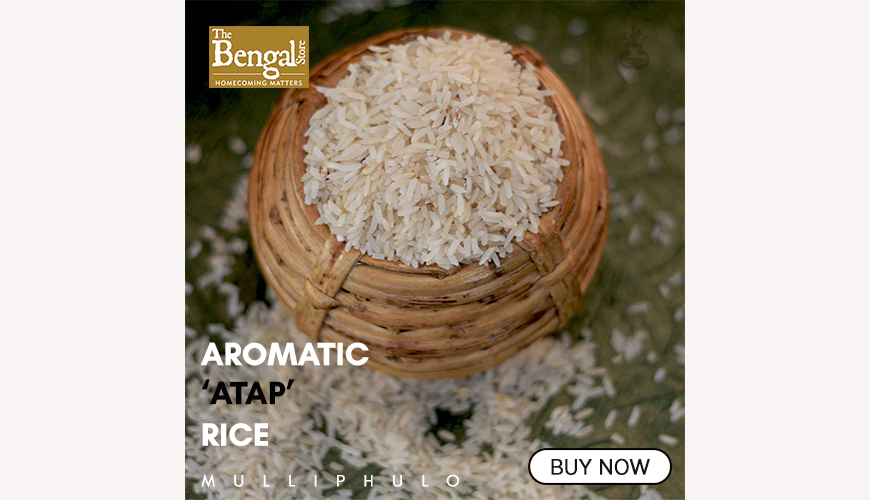Why does Kojagori Lokhhi Puja remind many Bangaals of the aftermath of Bengal’s Partition?
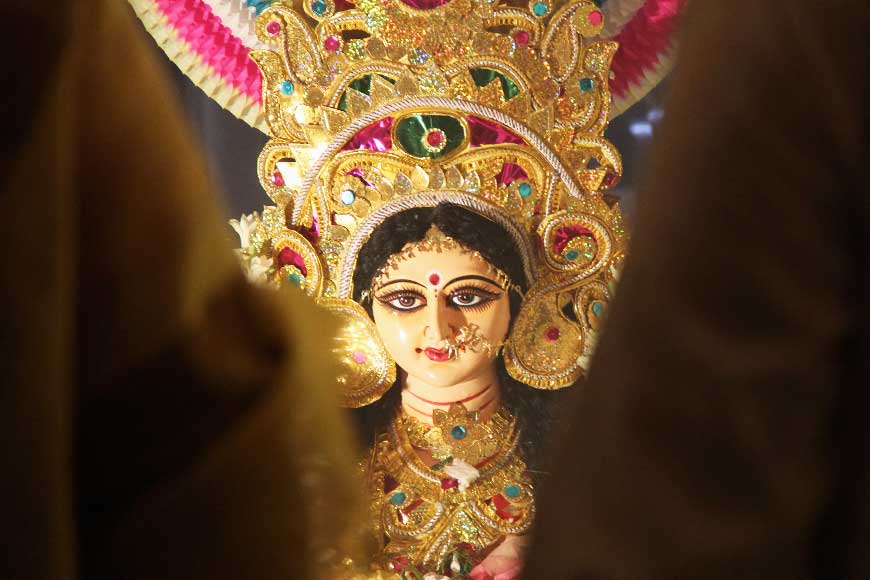
Kojagori Lokhhi Puja that follows Durga Puja and is held on Kojagori Purnima is widely popular all over Bengal. However, for many of the older generation this is also a Puja that reminds them of the dark days of Partition, the blood bath that followed and how financially they tried to establish themselves in West Bengal after losing everything as a refugee. The Kojagori Lokhhi Puja, as locals call this day of worship, is the day when Bangaals (the local term used to refer to Bengalis from East Bengal) offer prayers to Goddess Lakshmi.
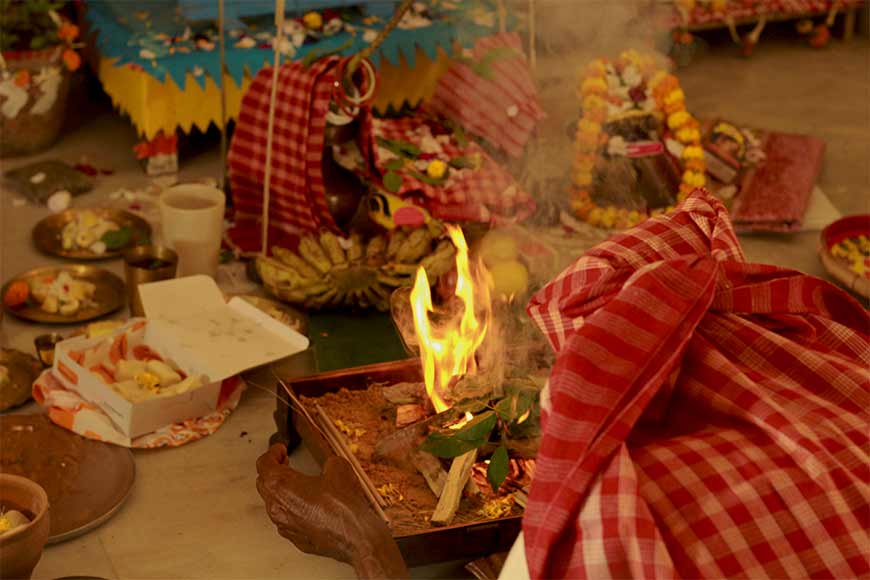 In process
In process
Interestingly, the original inhabitants of West Bengal, locally referred to as Ghotis do celebrate Lokhhi Puja, but at other times of the year. The rituals of colourful Lokhhi Puja pandals and alpona decorations is the link this popular Bengali festival has with its ghastly history of Partition. As octogenarian Tapas Nandi who had come with his family as a child from East Bengal, mentions: ‘Between 1946 and 1964 almost 5 million people crossed borders to enter West Bengal. Almost all of us had to leave our ancestral land and property as a result of the large-scale communal violence and we came to this part of Bengal almost as paupers. We did face a lot of hostility from the Ghotis and discrimination too. In our refugee camps, I remember my dad, uncles and other elders started Kojagori Lokhhi Puja to bring in wealth back to our lives.’ His forefathers resided in Myemensingha, where in their zamindari house, Lakshmi Puja was celebrated in a big way.
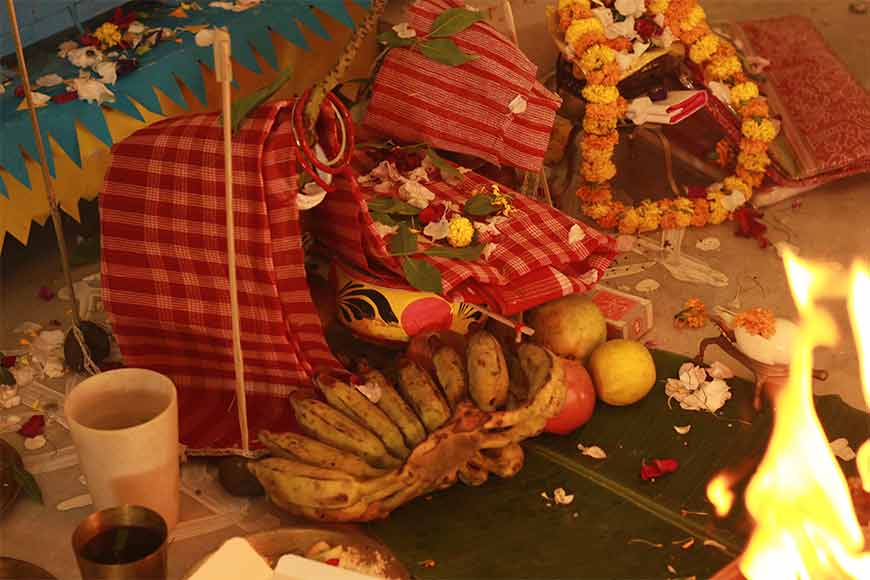 Needful..
Needful..
True as Nandi mentions, the Bangaals did have a distinct identity, in their linguistic and cultural attributes that marked them out from the local Bengali population. Having left behind most of their property and jobs in East Bengal, poverty was a natural outcome for them. The number in which they came in created problems of job competition and housing for the local population who began considering them as a nuisance.
The Ghoti-Bangaal divide as History lecturer Namrita Dhar mentions primarily came from Economic competition leading to cultural marginalization. The Ghoti-Bangaal dichotomy became very rigid after Partition. Since the occasion of Lakshmi Puja was associated with prosperity and was celebrated in accordance with harvest cycles, Bangaals tried to re-establish that tradition when they came to this part of Bengal, primarily because she was the Goddess of wealth.
Also read : GB ‘Lokkhi in Olokhhi’ – MRINAL MANDAL
Inhabitants of West Bengal worshipped Goddess Lakshmi a number of times in the year, coinciding with the harvest seasons. For the Bangaals, the occasion was always celebrated with much pomp and show only once a year. The worship of Goddess Lakshmi for them was accompanied with an element of a grand cultural exhibit that involved music and food. While in East Bengal, Nandi remembers Lokhhi Puja ceremony was a grand celebration almost like Durga Puja of Bengal.
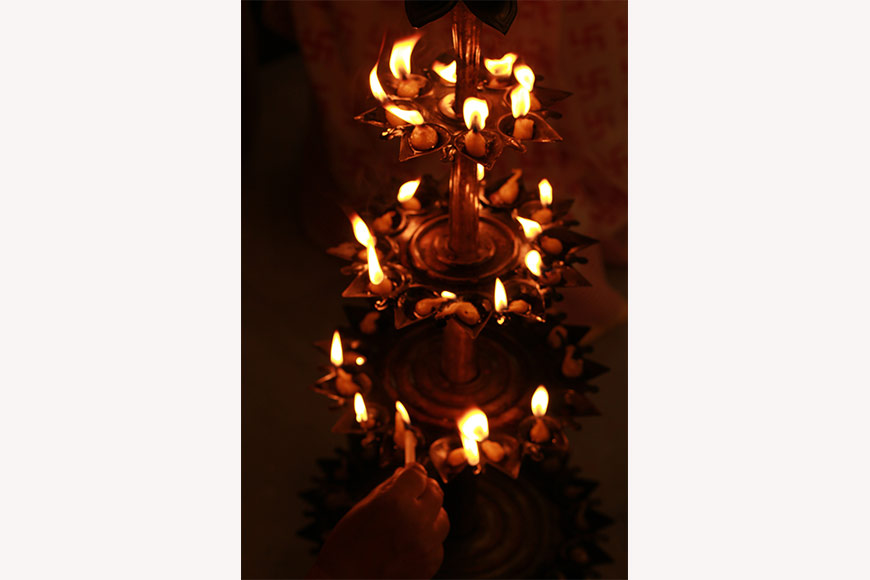 The purest flames
The purest flames
The poverty resulting from migration resulted in a scaling down of the celebration in the new- found homeland of West Bengal. Despite that Lakshmi Puja offered a perfect means for display of the cultural identity of the Bangaal in front of the Ghoti. As Pabna resident Shekhar Banerjee, whose cousins still stay in Bangladesh says: “Lokhhi Puja was not just another Puja for us, through it my grandfather and father and their friends tried to express their identity.” The bhuna khichuri bhog of Kojagori Lokhhi Puja with the Tiler Naru and Narkel Naru dipped in jaggery were all typical dishes that Bangaals introduced during Lokhhi Puja in this part of Bengal.
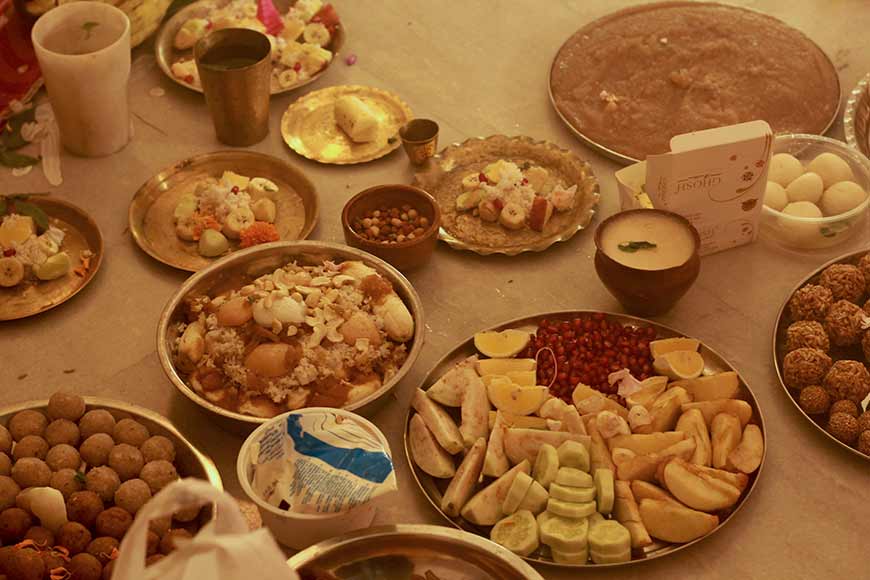 The scrumptious sweet courses
The scrumptious sweet courses
With time, the line between Bangaal and Ghoti started disappearing. As Bengal decks itself up to celebrate another Lokkhi Pujo, a large number of Ghoti Bengalis are also celebrating the occasion along with the Bangaals, largely forgetting the East Bengali roots of the splendid festival.







